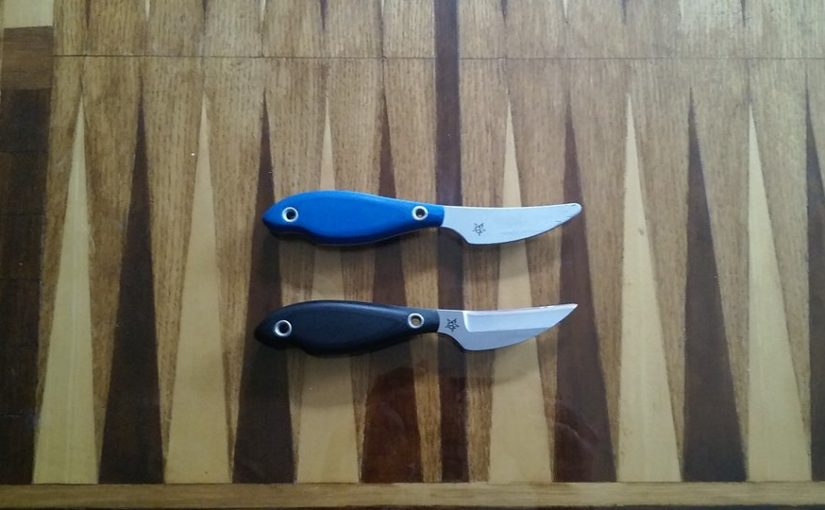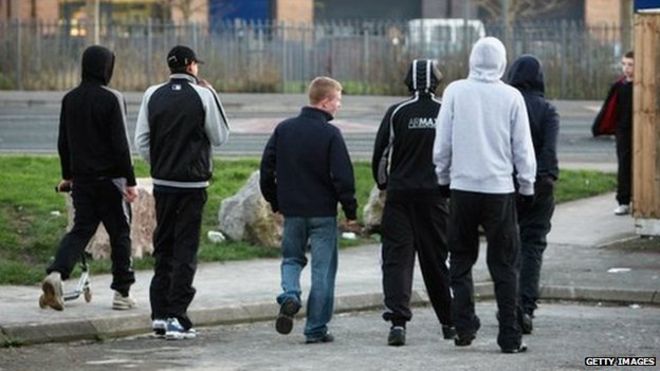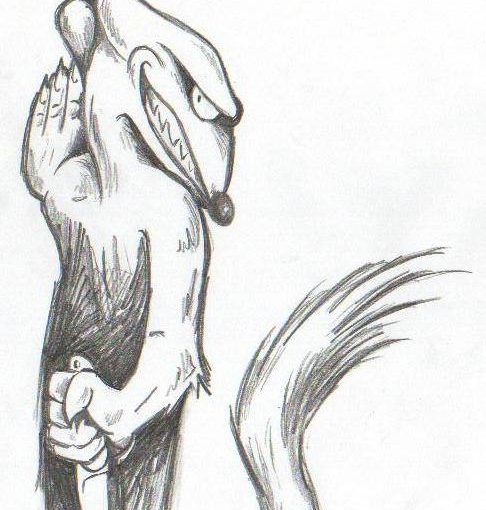It is a common misconception that, in a street or criminal subculture, there are no rules. Nothing could be further from the truth. Every successful culture and organization must have rules, both unspoken and implicit. Without them, it becomes a free for all, and the effects of this free for all would limit the ability of the cultures to operate and survive. Some of the effects these rules try to avoid are police involvement, collateral damage to civilians, harm to those in the group, and distracting power struggles both within and between differing groups.
The main difference between ‘regular’ cultural rules and the various street cultures is enforcement and understanding. Especially to some involved, there is not always a clear understanding of why certain rules exist. Because of this, there is usually some friction between established members and newer members of the group, until either an explanation is given, or more often, the rule is ignored, and an enforcement action is implemented.
One of the most sacred rules is to not screw over or cheat your own kind. Otherwise known as ‘don’t shit where you sleep’.
The reason for this is many. When you can’t trust the system, trust in your group is more important than usual. Also, it limits interpersonal conflict in the group, which takes time and resources from the important things the group is involved in. When this rule is broken, enforcement/punishment is handled within the group, and is fairly quick, and usually brutal in its execution. The usual is a beatdown or public humiliation of some sort. But, depending on the seriousness of the infraction, and the rank or position of the individual cheated, it can be creative, and much longer lasting.
An example. There was once a young man brought into a group, and allowed to stay with them in an apartment instead of on the street. This young man decided to rob the apartment renters jewelry to feed his drug habit. In these cultures, someone who provides shelter, food, mentorship, and care is pretty high on the list. This was a major violation of the groups rules, and demanded big punishment. The initial punishment administered was a series of beat downs, done randomly. Wherever he went, people, seemingly out of the blue would assault him. Not feloniously, to where police would get involved, but often enough that he never healed from the prior beating. But, this was only the beginning, as the rule he broke was a major one, it needed to be enforced, and an example made to show others why you do not violate this rule. Punishment was decided on, and parties were contacted to get the enforcement action in gear.
What was decided on was this. Since drugs were the driving factor in the “crime”, the major dealers in the downtown area agreed to cut him off. He could not get his fix in the downtown area any longer. For an addict without reliable transportation, this is a living nightmare. You must go further and further away from your base to acquire your drugs, which takes time and money. it also makes you go into ‘enemy’ territory,and deal with dealers who are not your contacts, that will not hesitate to jack you. This lasted until the young man moved on to another state, but his reputation will follow him, and he is marked in that particular circle.
It is important to point out that these cultures are not limited to a specific city or state, contacts exist and word spreads. And sometimes, punishment will be administered in a different city if the person runs, thinking distance will keep him safe.
There was a gutter punk at one time that was fairly respected, pulled his weight and contributed to his tribe, taking care of younger members and the like. Until his addiction took control. He became predatory among his own group, strong arming and bullying in order to up his supply. Another example of crapping in his nest. Unfortunately, he targeted an affiliate of the group, not a member, which is a fairly respected position, and usually off limits to this kind of thing. In the process of trying to strong arm this affiliate, he broke her arm. Knowing this was a major violation of all rules, and would bring a lot of heat, he chose to leave town, boarding a Greyhound bus.
Unfortunately for him, he was watched, and his destination was passed on to the interested parties. Calls were made, favors exchanged, and when the gutter punk in question stepped off the bus three states away, he was beaten and hospitalized as he was leaving the bus station. There was an above average viciousness to his punishment for two reasons, one was for who he injured, based on who she knew, and second, for leaving like a coward and not facing group justice. A message had to be sent that running would not protect you, and the arm of the group reached far.
Sometimes rules exist with multiple groups, to ensure the safety and protection of a wide range of people. Certain drugs and dealers are not allowed in an area, for example, in order to limit the damage. Bath Salts were one of these drugs, due to the danger they presented to users.
Enter a multiple rules violation situation, which shows how serious, widespread, and important these rules are across the different groups in a given area.
First rule, no Bath Salts in the downtown area, second rule, no sexual assault, third rule, don’t lie to your own, fourth rule, take care of your people. In the summer of 2014, one person violated all these rules, and brought punishment not just on himself, but on his entire group for his actions, as sometimes punishment is group instead of individually distributed due to the nature of the offense.
In a nutshell, a street level dealer got in a shipment of Bath Salts. He got high, decided to kidnap a street girl, rape her, forcibly get her high on the Salts repeatedly, and beat her. This street girl was with another man at the time. When he let her go, she was in a catatonic state, and has to this day not recovered her sanity, and nobody knows how many doses of Salts the dealer forced on her. This was one of the most heartbreaking things to have occurred on the streets of this particular city, as the girl was fairly popular, her man was working to get them off the street, and it looked as if they would escape the ‘life’.
So, needless to say, the reaction was swift and very violent. In one night, there were a series of felony and aggravated assaults along the corridor this group operated from. Not just beatings, I’m talking serious assaults doing grievous injury to the receivers. Anyone affiliated with this dealer was the target, as well as other dealers known to or bragged about having Salts for sale. Oddly enough, there was no interference from outside groups or even the police during this night. Rarely, various groups understand the need for looking the other way in order to accomplish a greater good. As long as the parameters of the hunt were obeyed, another example of rules enforcement, business could be taken care of.
It was understood that there were limited targets and time frame, and it was not a free for all. As far as the main target, he was located, taken to a different location, and nobody would comment further. This was one of the more extreme enforcement actions I have witnessed, but it shows multiple things. What some of the rules are, how people are valued in this culture, how much enforcement is left to these groups, and how cooperation can exist between even normal enemies to accomplish a goal.
Ok, now let us leave the street culture and go to another place that civilians think rules don’t apply to them at best, or don’t exist at worst… the topless bar! Yay, let’s go get drunk or high, oogle young women, let our inhibitions go, and nothing bad will happen, there will be no repercussions…
In a word, bullshit. The reason for bouncers and security staff are to enforce the rules of the establishment. As in the street and criminal subcultures, some of these rules are implicit and some are unspoken, but should be obvious to anyone with an above room temperature IQ.
A rule as simple as don’t go in the dancers locker room. Seems pretty obvious, but a surprising number of men thinks it applies to everyone but themselves, and this has caused me more fights than almost anything else in this setting. Another rule repeatedly violated is the do not touch the girls rule. Not only do most of the girls find you creepy and old, therefore not wanting you to touch them, it is actually illegal for the bar to allow this to go on. It can lead to prostitution and pandering charges, and ultimately close the bar down, and yet…
Now, most violations of these rules are handled by you being ejected from the establishment. If it was a bad violation, you may be 86’d permanently.
But there are some rules that will be enforced with an extra dose of violence when they are broken.
One of these rules is to not mess with the staff. Bartenders, wait staff and DJ’s are the lifeblood of a strip club. Dancers come and go, and sometimes come back, and are the face of the establishment, but the support staff makes the business run, keeps the party going, and brings in the money. Interfering with their ability to do their jobs, threatening them, or actually assaulting them are a good way of discovering pain and injury that you never would have thought of on your own. Another big no-no is to target vehicles in the bars parking lot for theft or breaking in. This leads to customers not feeling safe and welcome, which dries up the money flow. If you are caught doing this, there will be no quarter given, and you will learn that the bouncers know which angles and areas the security cameras do not cover…
Notice how most of the rules for a bar in general, and especially a topless bar are geared around money coming in. How serious would you be about enforcing your ability to make money and provide for your family. Now, imagine the ferocity a group of people will bring to that, it would not be a good thing to interfere with. In this world, it is all about protecting the resources. This is simple to understand, but is manifested in different ways. The established dealer in the bar will have a degree of protection from the staff, in order to keep a calm and quiet proceeding to the business being handled. Regulars will be afforded more respect and have more influence than off the street customers, as they are members of the ‘family’, and are part of the resource train.
Another thing that I found surprising was the number of ‘normal’ people that don’t understand the importance of manners and proper etiquette in underground cultures. These manners all exist to grease the interactions between various and opposing factions and people, too make things easier, and avoid needless conflict. Violation of these simple manners will be addressed very quickly in order to stop any unwanted attention and to keep worse violence from happening. Trust me, you don’t want to be the one that the example is made of as to why these rules exist.
If you must go to, or happen to find yourself in one of these areas, stay calm, don’t panic, and generally just stay quiet. Everyone there knows you are not a regular, or inhabitant of said culture, and will treat you accordingly. You may take some guff or verbal challenges, but in general, physical violence will only come if you really screw the pooch. The surest way to guarantee you will have enforcement brought to you is by insisting on the rules from your home or culture be dominant in your new surroundings. This is a particular form of arrogance brought mostly by young men, and oddly enough, middle class visitors to an area. For real, folks, don’t be that guy. Your safety is in your hands, and is very simple to affect, behave yourself, don’t be an ass, and be quick to apologize or explain if called on the carpet for making a mistake.









